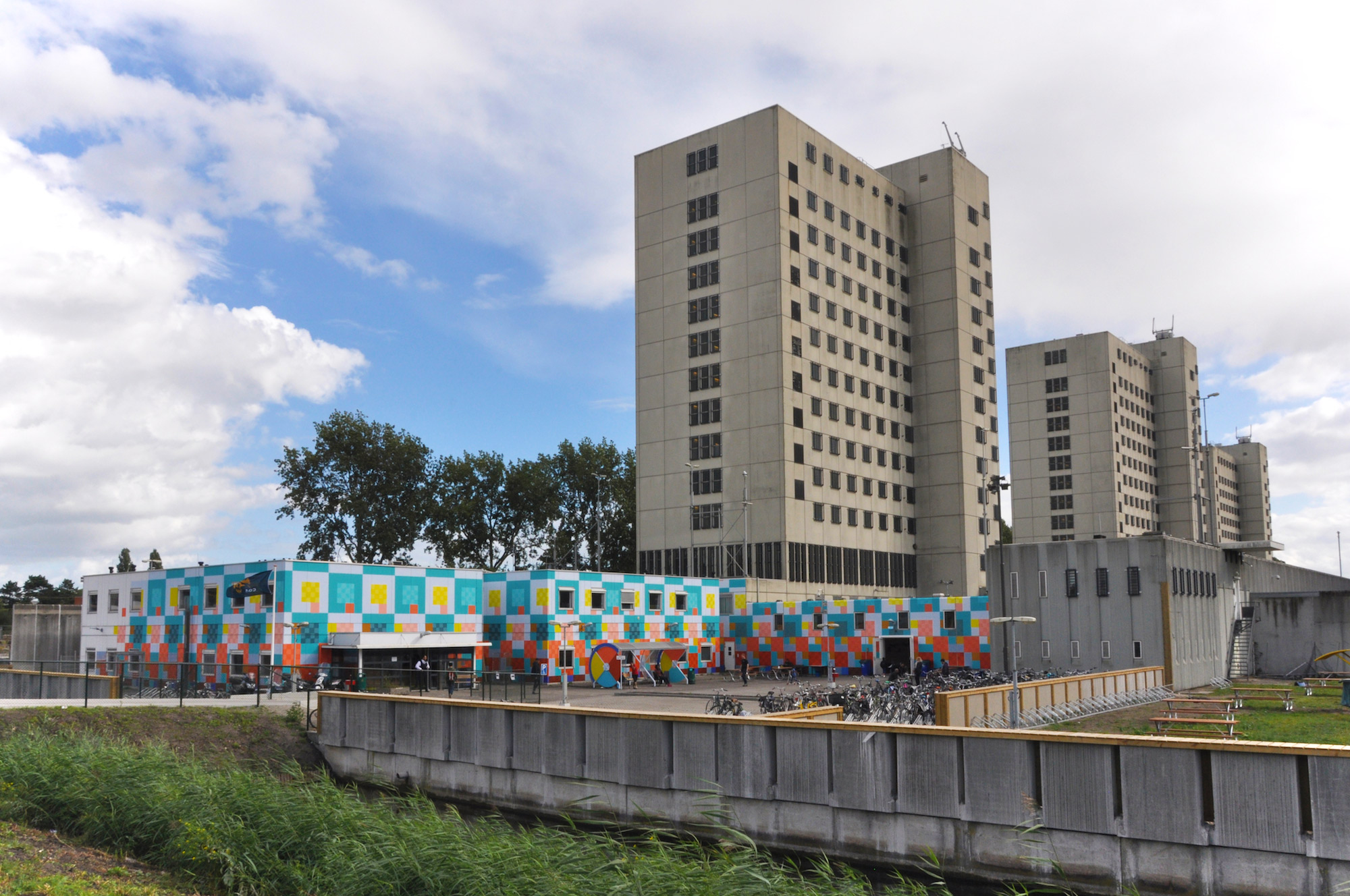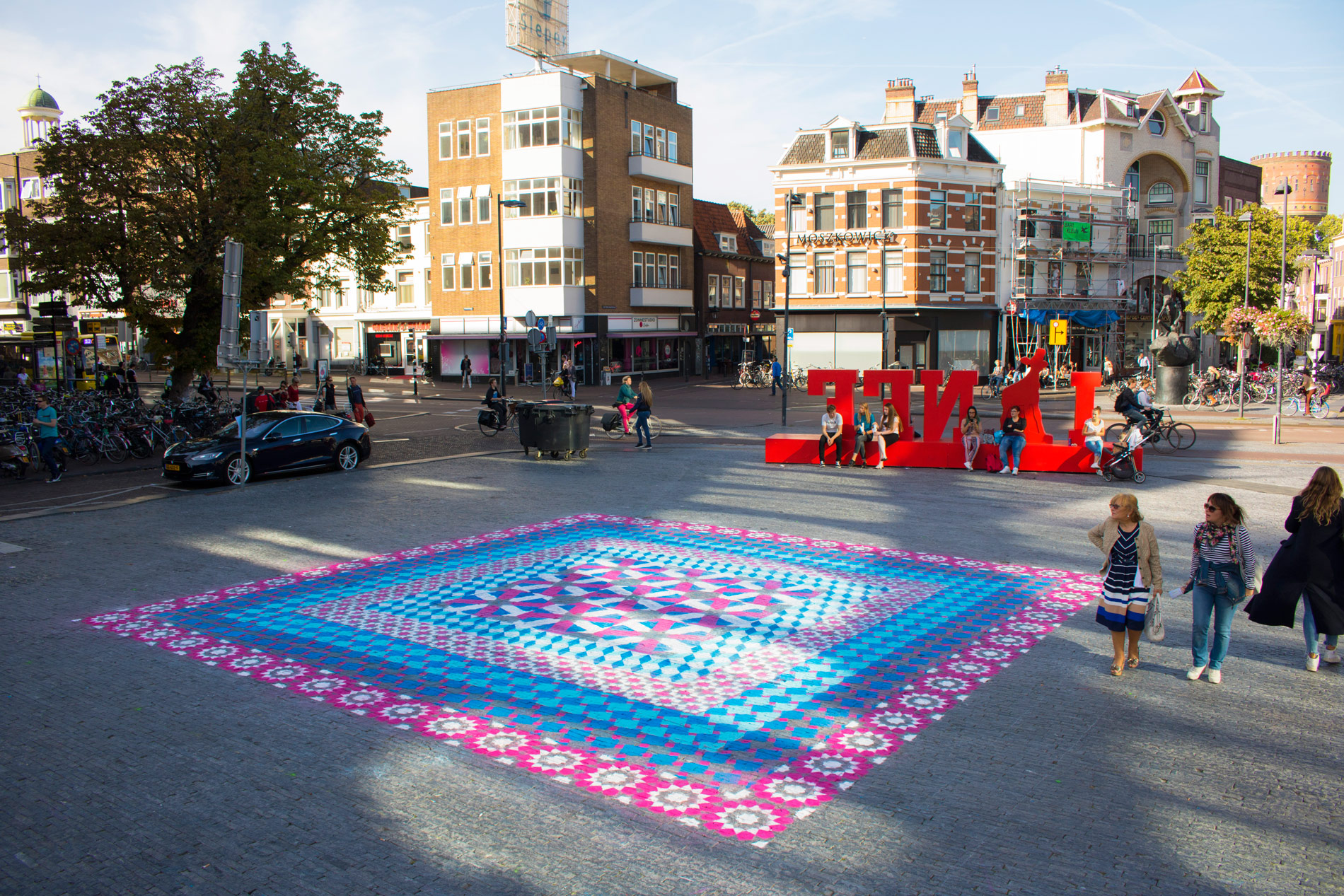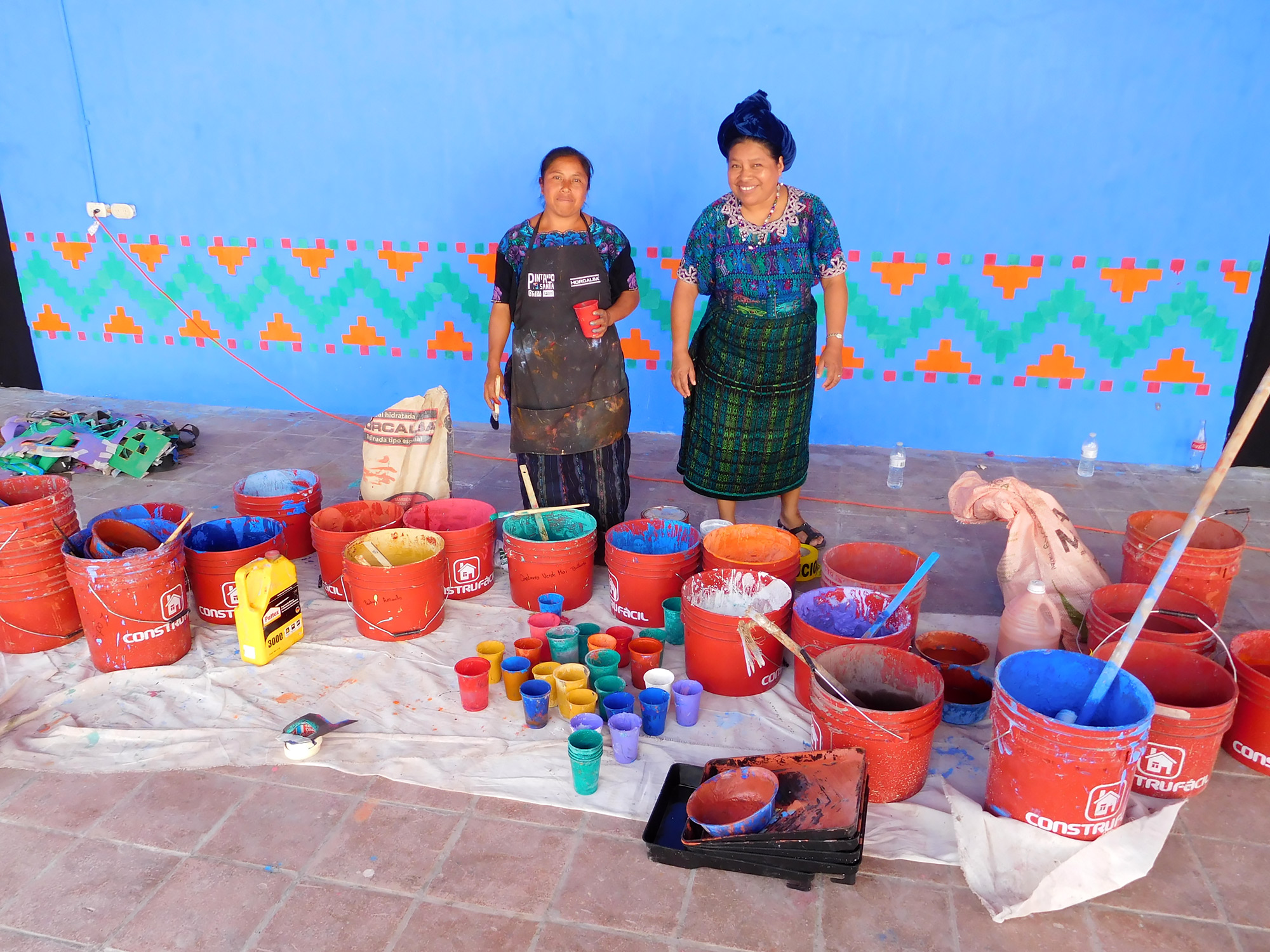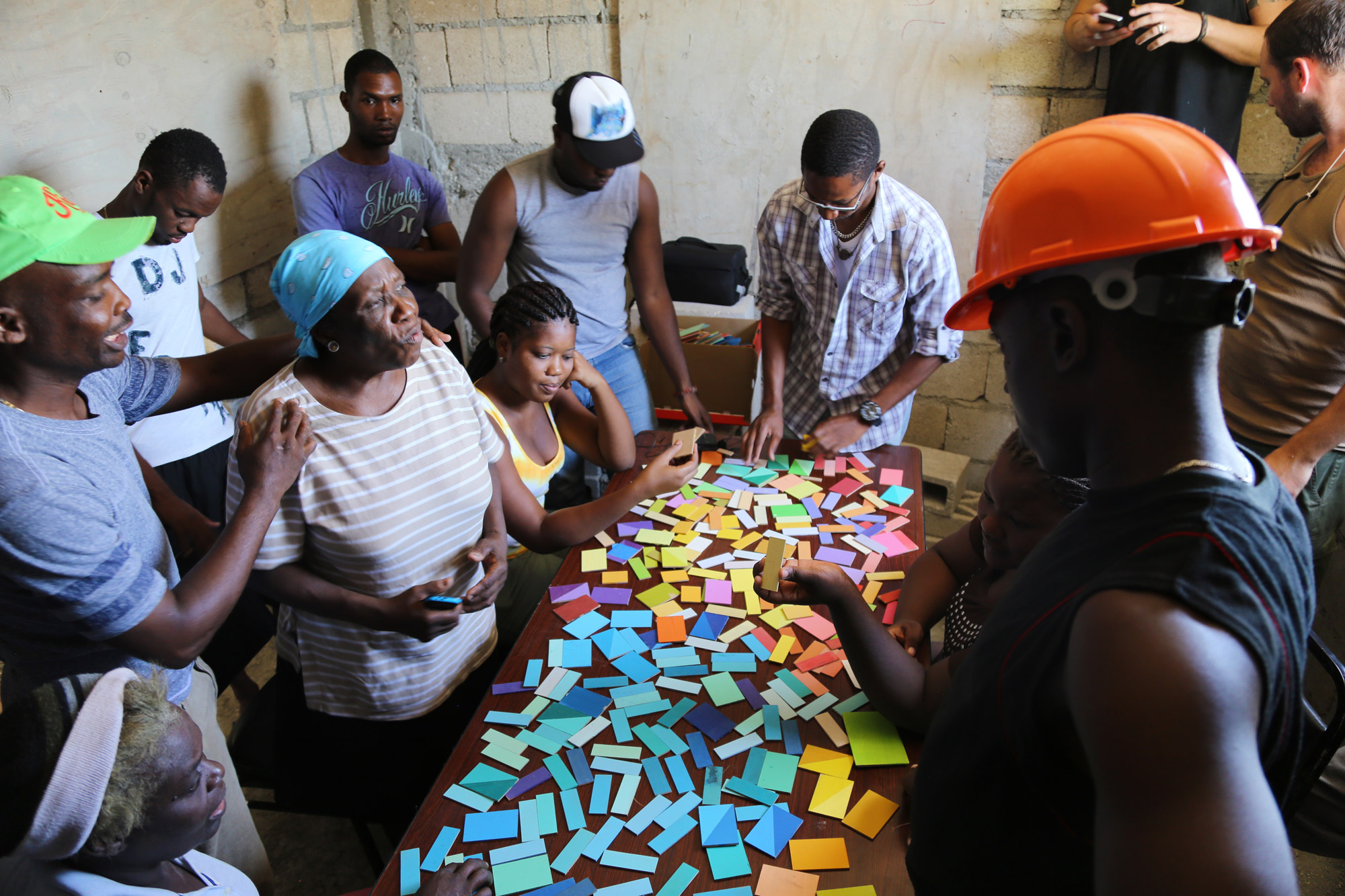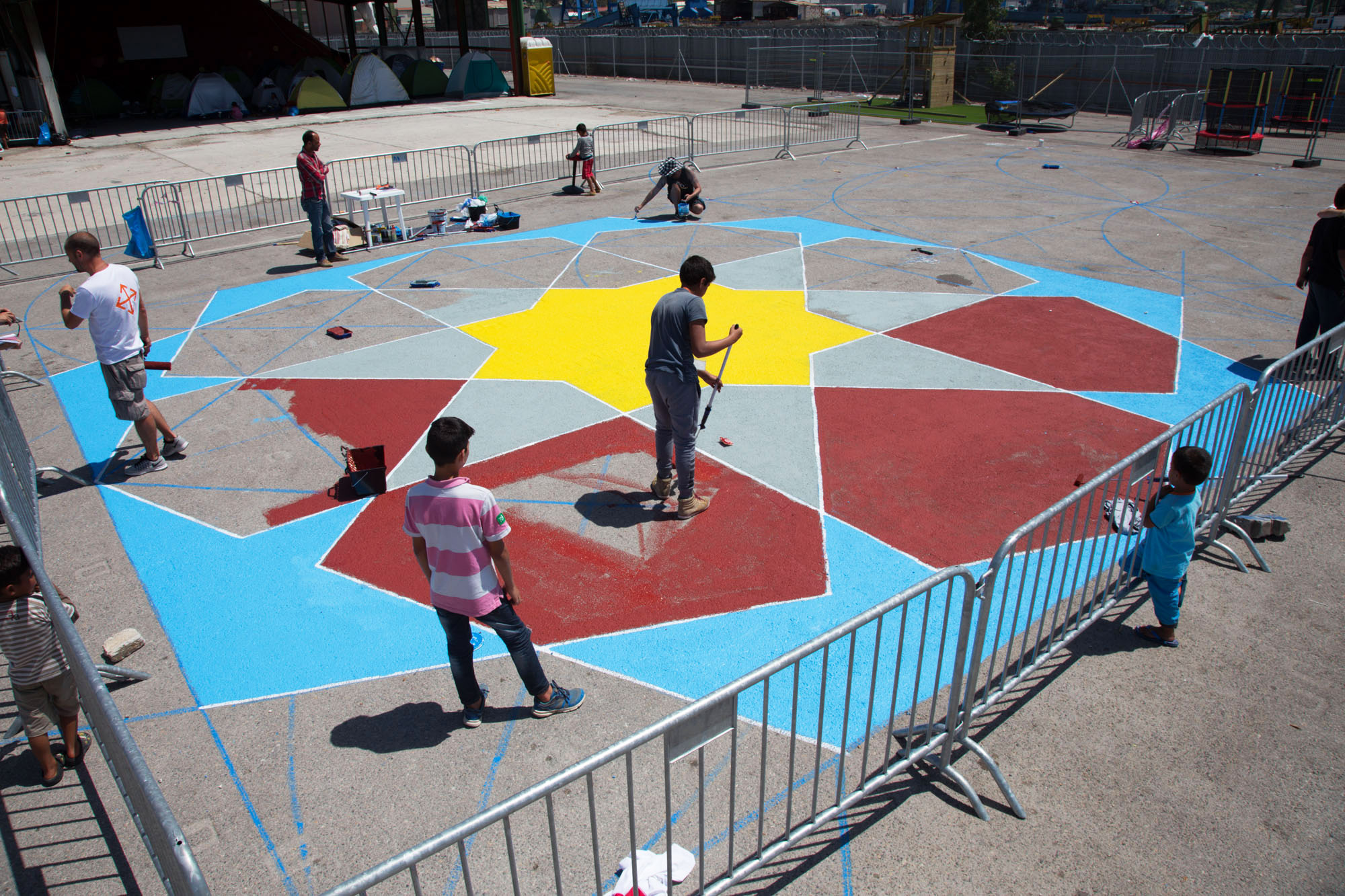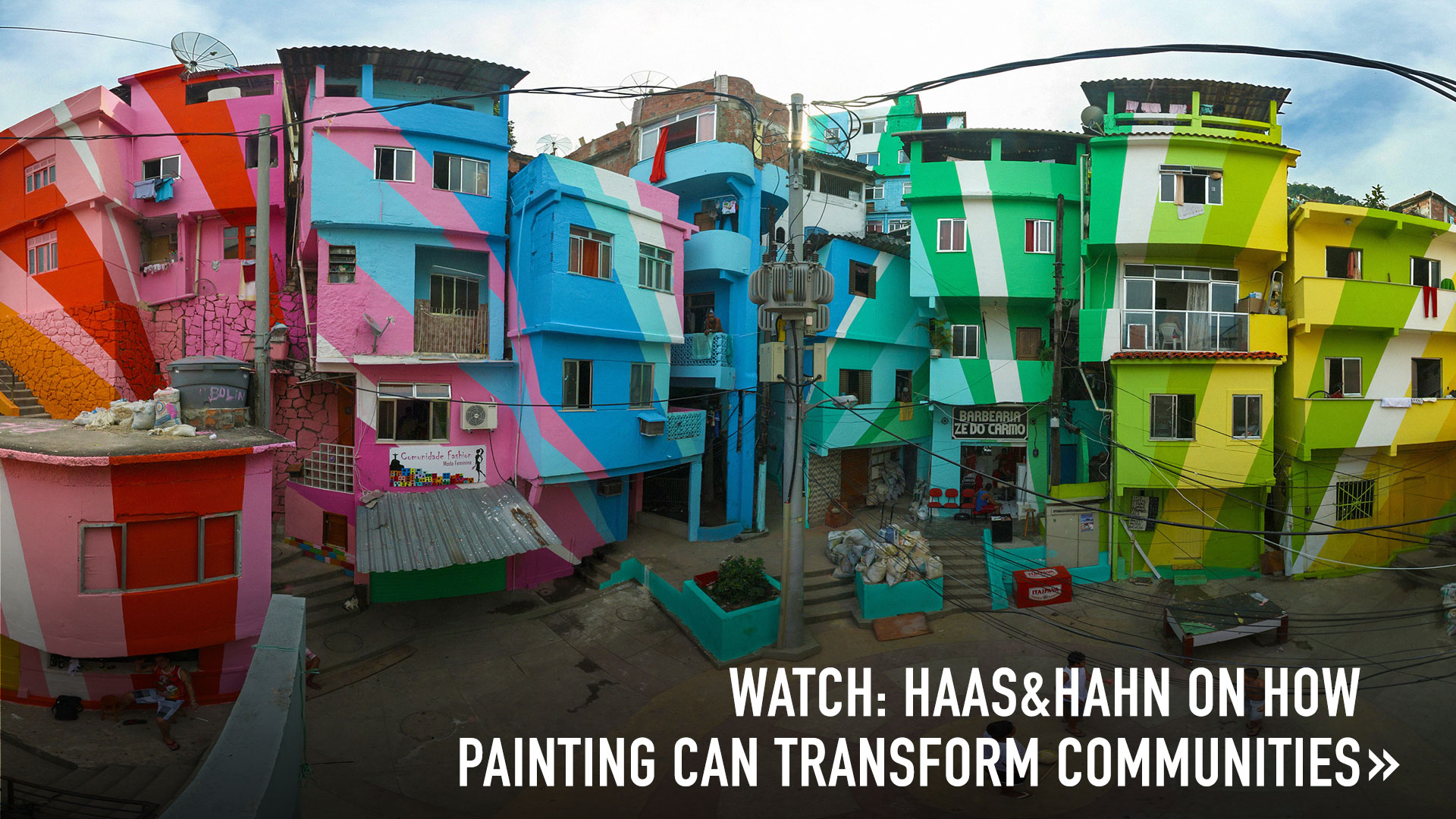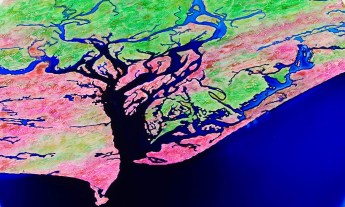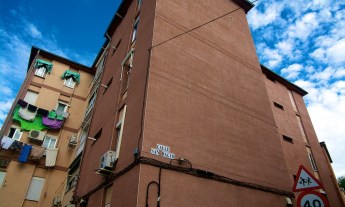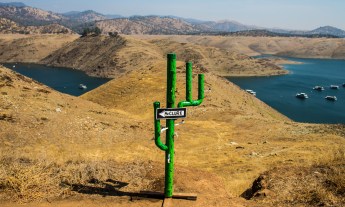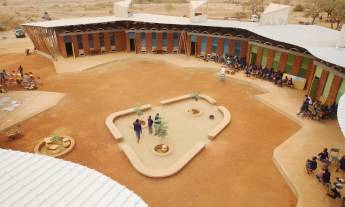Artists Jeroen Koolhaas and Dre Urhahn rejuvenate neighborhoods around the world with color and collaboration through large-scale painting projects.
Design duo Haas&Hahn — Dutch artists Jeroen Koolhaas and Dre Urhahn — like to ask big questions (TED Talk: How painting can transform communities). For example, why should they use their brushes and paints on a single canvas when they could take the same tools and transform buildings, blocks and entire neighborhoods? And why should they be the only ones to experience the creativity, joy and power of the process? Why not recruit people living in the area to participate?
Their attempts to answer these questions began in 2007, when they worked with youths in the Vila Cruzeiro favela of Rio de Janeiro, Brazil, to brighten the community. Since then, the pair has returned to Rio several times to paint different sections of the city with vivid hues and patterns. Not only has their work — which can sometimes be seen from miles away — revitalized its surroundings, but it’s also enhanced residents’ relationships to their neighborhoods and each other by giving them the chance to do everything from choosing the colors to actually decorating the surfaces.
The artists have now worked in locations such as Port-au-Prince and Amsterdam, but they see all their initiatives as bound together by common themes of inclusion, kinship, beauty and positivity. “Our work is basically one project with teams in different places,” Urhahn says. Here, follow them on their travels over the past few years.
Amsterdam: New life to temporary housing
Holland is one of several European entry points through which refugees from countries such as Syria, Somalia and Afghanistan pass before being resettled on the continent. While they wait for their immigration status to be resolved, they live in temporary housing — here, a former prison known as Bijlmerbajes. Working with local nonprofit groups and the city government, Haas&Hahn are painting colorful life onto gray, drab, impersonal structures. Progress on the six-tower compound has been steady but slow. “It’s a wall-by-wall approach,” says Urhahn. “Every wall that we paint requires meetings before we can paint it.” The refugees cannot work legally, so the artists have enlisted some of them to paint the walls, running free workshops to teach the skills they need. “One of the easiest ways for people to feel at home is if they can actively change their visual surroundings,” Urhahn says.
Utrecht: Refugees help create fleeting beauty
Haas&Hahn made this chalk carpet for a film festival in Utrecht, Netherlands, whose curators had read about their project in Amsterdam. In fact, Haas&Hahn brought a team of refugees from Amsterdam to make this piece. While they were working on it, the team was able to interact with passersby and have conversations about where they came from and how they ended up there — allowing them to be seen as more than just numbers. “Part of the big attraction of the artwork is that it can put a human face on both sides of the discussions and get people in touch with each other,” says Urhahn.
Santa Catarina Palopó: Local paints and designs
In Guatemala, Haas&Hahn’s work took an environmental turn. The community, Santa Catarina Palopó, was one of many surrounding Lake Atitlan that depended on the fishing industry. Over time, the lake’s waters have become polluted, devastating the region’s economies. When Haas&Hahn came to work on murals for the town’s walls and public spaces, the citizens of Santa Catarina Palopó demanded that environmentally friendly paints be used, as they feared chemical runoff into the lake below. So they went for a homemade option, hiring local experts to mix a simple, old-fashioned, all-natural solution of chalk and lime to create the paints. When it came to the murals’ motifs, residents also had very specific ideas. “The designs were basically taken directly from the fabrics the ladies wear — these beautiful, traditional, handmade garments. And they also represent their particular community,” says Urhahn. “If you go to the neighboring city, the designs will be different, so you can recognize the place through the designs they use.”
Port-au-Prince: The power of collaboration
Getting local involvement was a prime consideration for Haas&Hahn in Haiti, in no small part due to residents’ wariness of foreign NGOs; in contrast, the artists wanted to be nothing but a positive force for their collaborators. The mural project in the Villa Rosa neighborhood of Port-au-Prince brought together many community groups that saw the art not only as a way to bring beautification and employment to their neighborhood, but also to increase tourism. When people gathered to choose paint colors, the residents, young and old, examined and discussed hundreds of possible hues for hours. The color palette was adjusted until everyone was satisfied. “Talking about color is something that brings the community together,” says Urhahn. “But you also get to figure out a community’s dynamics, what it’s about and what they’re celebrating.” A local organization grew out of this project: COCREAD, a nonprofit that continues the work started by Haas&Hahn and manages ongoing mural projects.
Curaçao: Ribbons of creativity
In 2014, Haas&Hahn were invited to lead a summer program about public art on the island nation of Curacao. They really liked the atmosphere there and found people eager to paint. Because the island was centrally placed between their Rio and Haiti projects, it seemed like the perfect spot to host an ongoing series of workshops. The top floor of Kurá di Arte, a school and multi-use space for the arts, became their Favela Painting Academy. Located in the Otrobanda neighborhood of the capital city of Willemstad, the program was created to instruct students who want to start their own large community art projects. The duo wanted to reflect the area’s traditional woven fabrics in their design for the facade of the building; the Academy opened in 2016.
Skaramagas: Welcoming with color and work
Like the Amsterdam prison rehab project, this initiative also took place in refugee housing — in the Skaramagas refugee camp outside Athens, Greece. Similarly, Haas&Hahn started the project to give waiting migrants work to do and to brighten their environment. “People get excited to turn these gray areas into something that is nicer to look at, but it’s also something they feel they own because they’ve changed it themselves,” Urhahn says. In 2017, Haas&Hahn plan to begin similar projects in other camps near Athens as well as in Lesbos and Thessaloniki. It’s all part of one of their largest ventures to date — beautifying refugee housing across the European continent. Meanwhile, the artists continue to be involved in programs in Curaçao and Guatemala, and they’re setting up a new phase of their Rio project.

